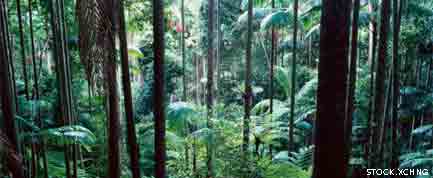
Greatest Mysteries: How Many Species Exist on Earth?
Only about 10% of animal species are known, scientists estimate.

Editor's Note: We asked several scientists from various fields what they thought were the greatest mysteries today, and then we added a few that were on our minds, too. This article is one of 15 in LiveScience's "Greatest Mysteries" series running each weekday.
The prospect of discovering little green men on other planets has long captured our imaginations, but many scientists are just as excited about finding new life forms in our own backyard. Though humans have shared the planet with millions of other creatures for thousands of years, we know surprisingly little about our neighbors—we don’t even know exactly how many flora and fauna call Earth home.
The National Science Foundation’s “Tree of Life” project estimates that there could be anywhere from 5 million to 100 million species on the planet, but science has only identified about 2 million. “We’ve only touched the surface of understanding animal life,” said entomologist Brian Fisher of the California Academy of Sciences. “We’ve discovered just 10% of all living things on this planet.”
Environmental index
Taking an exact count of Earth’s creatures may not seem like the most important task, but taxonomy, the science of discovering, describing and categorizing living things, is “the foundation for understanding life on this planet,” Fisher said.
Knowing just who we share the planet with is of particular concern now because global warming, deforestation and other signs of human development are threatening many species, which may be essential to the functioning of ecosystems or may have inherent value in terms of developing medicines or other products. As Fisher puts it, knowing what kind and how much life is out there could make society more “bio-literate”—we would better understand the impacts that human activities have on other living things. “We could have kind of a Dow Jones index of the environment,” Fisher said.
No simple answer
Though taxonomists have been cataloguing plants and animals for more than 250 years, they still have no exact answer to the question, “How many species are on Earth?” “It’s a very simple question, but we have no simple answer,” Fisher said.
One of the reasons we can’t get an accurate count is that the bulk of the things that have yet to be discovered and described are in the realm of the very small: insects, bacteria and other microbes. “We’ve done a pretty good job of categorizing from the size of a fly up,” but anything below that is far less known, said Joel Cracraft of the American Museum of Natural History in New York.
Sign up for the Live Science daily newsletter now
Get the world’s most fascinating discoveries delivered straight to your inbox.
Another part of the problem is that the tradition of taxonomy has been confined to the developed world for the bulk of its existence, leaving out the enormous diversity of much of the southern hemisphere, which is less developed on average. “Species aren’t equally distributed across the Earth; they have these hotspots,” Fisher said.
For example, says AMNH entomologist Randall Schuh, as of 2003 there are about 2,000 known plant-eating bug species in North America, but only 200 in Australia, while the sampling of Australia’s plant diversity that Schuh has done since then suggests that there could be as many as 3,000 plant-eating bug species in Australia. Complicating the matter are “cryptic” species, which look the same to the human eye, but genetically are quite different, making them that much harder for scientists to classify.
“When we go out in nature and we see individual organisms, they don’t wear little name tags, they don’t tell us what they are,” Schuh said.
New tools
But taxonomists now have new tools such as DNA sequencing that are making distinguishing one species from another, particularly “cryptic species” and smaller creatures, much easier.
“We’re going to find more and more things through these tools, there’s no doubt about it,” Schuh said. Biologists are also combining their knowledge in projects such as the “Tree of Life,” the bug-focused Planetary Biodiversity Inventory co-headed by Schuh and the Census for Marine Life (a network of researchers in more than 70 nations engaged in a 10-year initiative to assess the diversity and abundance of marine life), all of which are intended to identify, catalogue and connect lineages of Earth’s millions of species.
“I think now we can, if we put some resources behind it, address this exciting fact that 90% of life is yet to be discovered on the planet,” Fisher said.

Andrea Thompson is an associate editor at Scientific American, where she covers sustainability, energy and the environment. Prior to that, she was a senior writer covering climate science at Climate Central and a reporter and editor at Live Science, where she primarily covered Earth science and the environment. She holds a graduate degree in science health and environmental reporting from New York University, as well as a bachelor of science and and masters of science in atmospheric chemistry from the Georgia Institute of Technology.










